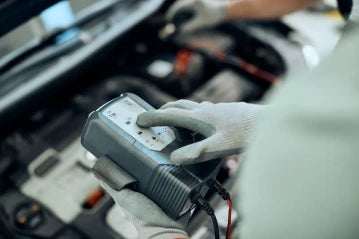
As the world moves towards renewable energy sources, solar power has emerged as a popular and sustainable choice. To harness the maximum potential of solar energy, it is essential to have an efficient and reliable solar energy system. One crucial component of such a system is the solar charge controller, which plays a vital role in optimizing power flow. In this article, we will focus on an important feature of solar charge controllers: the load output. We will explore its significance, how to connect loads, the output type, and whether the load output terminals always have power.
1. Solar Charge Controller Load Output
A solar charge controller is an electronic device that regulates the flow of energy between the solar panels, battery, and loads (appliances). It ensures the efficient charging and discharging of batteries, preventing overcharging and deep discharging, which can adversely affect battery life.
The load output terminals on a solar charge controller provide a dedicated connection point for connecting electrical loads such as lights, fans, or other appliances directly to the solar energy system. These terminals act as an intermediary between the battery and the loads, allowing you to power your appliances directly from the solar-generated electricity.
2. How to Connect a Load To the Solar Controller?
Connecting a load to a solar charge controller is a straightforward process. Firstly, identify the load output terminals on the charge controller. Typically, these terminals are labeled as "load" or "load output" and are distinct from the solar panel and battery terminals.
To connect a load, follow these steps:
Step 1: Ensure the solar charge controller is disconnected from the power source (solar panels and battery) to prevent any electrical shock.
Step 2: Identify the positive (+) and negative (-) terminals on the load output of the solar charge controller.
Step 3: Connect the positive (+) wire from the load to the positive (+) terminal of the load output on the solar charge controller.
Step 4: Connect the negative (-) wire from the load to the negative (-) terminal of the load output on the solar charge controller.
Step 5: Once the load is connected, reconnect the solar charge controller to the power source (solar panels and battery).
3. Why You Need the Load Output Terminals on a Charge Controller?
The load output terminals on a solar charge controller serve several important purposes in a solar energy system:
a. Convenience and Flexibility: By connecting loads directly to the charge controller, you eliminate the need for additional wiring and complex setups. It provides a more streamlined and organized system, making it easier to manage and expand.
b. Power Control: The load output terminals allow you to control the power flow to your appliances. Some charge controllers offer advanced features like timers, adjustable output voltages, and load disconnect options. These features enable you to manage the power supply to your loads effectively, optimizing energy consumption and extending battery life.
c. Battery Protection: By routing the load through the charge controller, you ensure that the battery remains protected from over-discharge. The charge controller monitors the battery voltage and automatically disconnects the load when the battery reaches a predetermined threshold, preventing irreversible damage.
4. Is the Output of a Solar Charge Controller AC or DC?
The output of a solar charge controller is typically DC (Direct Current). Solar panels generate DC electricity, which is stored in batteries and used to power DC loads directly or converted to AC (Alternating Current) using an inverter for powering AC loads.
The load output terminals on a charge controller provide a DC connection point for connecting DC loads. However, some advanced charge controllers may have integrated inverters, enabling them to provide AC power output as well. These hybrid charge controllers are suitable for systems that require both DC and AC power sources.
5. Do the Solar Charge Controller Load Output Terminals Always Have Power?
No, the load output terminals on a solar charge controller do not always have power. The availability of power at the load output terminals depends on various factors, including the battery state of charge and the charge controller settings.
When the battery is fully charged or reaches a specific voltage threshold, the charge controller may disconnect the load to prevent over-discharging. This feature protects the battery from damage and ensures its longevity.
It is important to consult the manufacturer's instructions or refer to the charge controller's user manual to understand the specific behavior and settings of your solar charge controller regarding load disconnection and reconnection.
Conclusion
Solar charge controller load output terminals are a crucial component in a solar energy system, providing a direct connection for electrical loads. They offer convenience, power control, and battery protection, making them essential for optimizing the efficiency and performance of your solar power system. Understanding how to connect loads, the output type (DC or AC), and the behavior of load output terminals will help you make informed decisions when purchasing and setting up your solar energy products. Harness the power of the sun and embrace sustainable living with a reliable solar charge controller and its load output feature.


0 comments